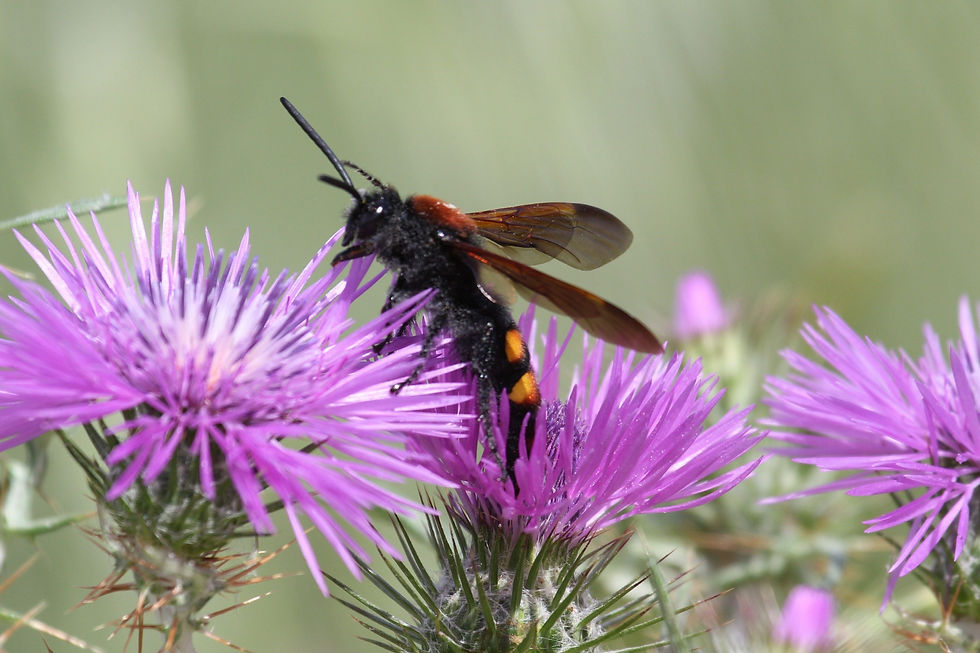

MAMMOTH WASP
As its name suggests, this is a big wasp, with the females attaining 60mm in length. The males are a little smaller. Females have yellowy-orange heads and small antennae whilst the smaller males have black heads and longer antennae. They both have bodies covered in downy hair and are glossy black in colour, with 2 yellow bands across the abdomen which are sometimes broken to form 4 yellow spots. You will only find these wonderful beasties where there are rhinoceros beetles as the female uses their grubs for incubating the baby wasps. She stings the grub which paralyses it and then she lays a single egg on the larva, you can guess the rest!
The adult mammoth wasps feed on nectar from flowers and I have observed that they prefer blue flowers. It is only the female that can sting and even though she is massive, the sting is no worse than a bee. They are not aggressive and do not form swarms, and so if you see one do not be afraid, unless you are the larva of the rhinoceros beetle. They are found from May until September near compost heaps, manure piles and rotting wood, as this is where the rhinoceros beetles are mostly found.









